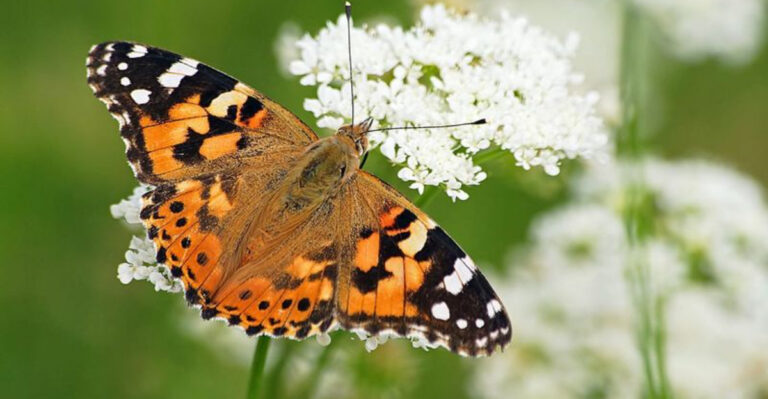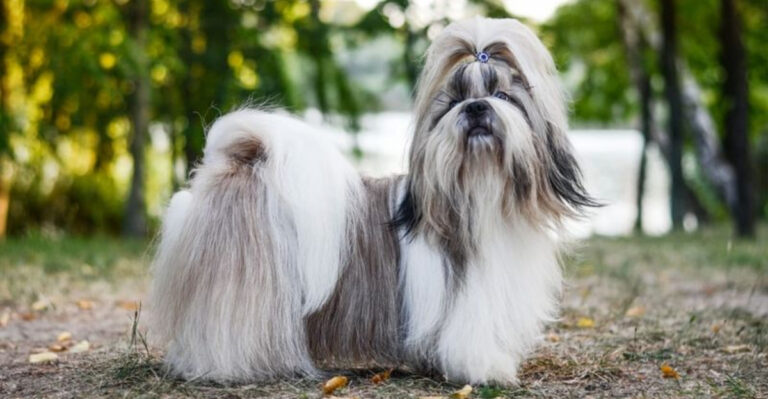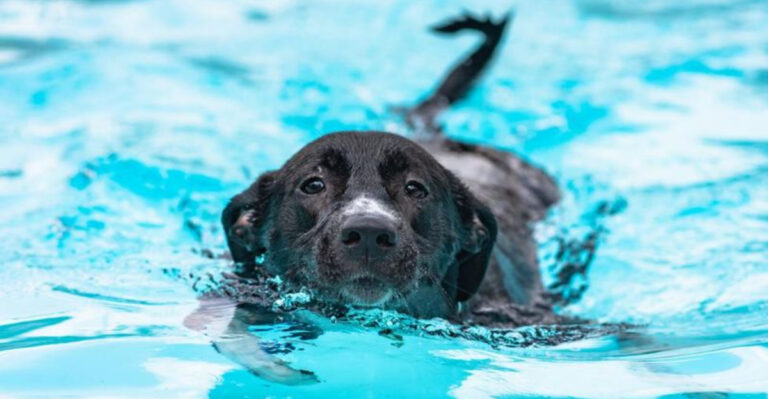15 Proven Ways To Keep Your Dog Calm During A Thunderstorm, According To A Vet
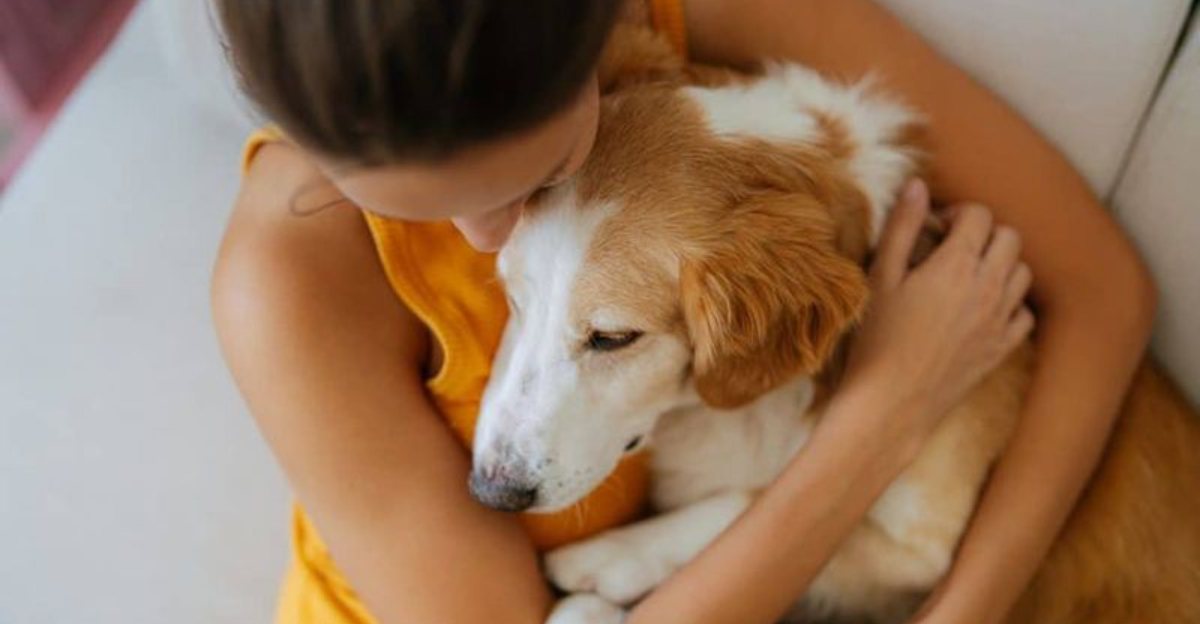
When thunder roars, many dogs experience intense fear and anxiety that can be heartbreaking for pet owners to witness.
The loud booms, flashes of lightning, and changes in barometric pressure can trigger panic reactions ranging from mild trembling to destructive behavior.
Understanding how to comfort your furry friend during these frightening weather events isn’t just about convenience – it’s essential for your dog’s mental health and well-being.
Let’s explore veterinarian-approved methods to help your canine companion weather the storm.
1. Create A Safe Haven
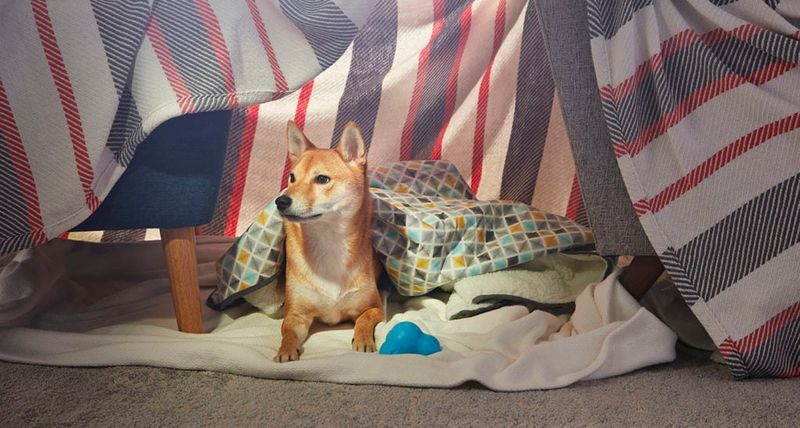
Dogs instinctively seek small, enclosed spaces when they’re scared. Setting up a dedicated storm shelter in a bathroom, closet, or under stairs gives your pup a sense of security when thunder strikes. Add their favorite bed, blankets, and toys to make it cozy.
The ideal safe space should be in an interior room away from windows where storm sounds are muffled. Some dogs prefer crates covered with a sound-dampening blanket, while others need more open spaces where they don’t feel trapped.
Keep this area accessible year-round so your dog associates it with comfort, not just scary situations. Many veterinarians recommend allowing your dog to choose their safe spot rather than forcing them into a specific location.
2. Try A Thundershirt Or Anxiety Wrap
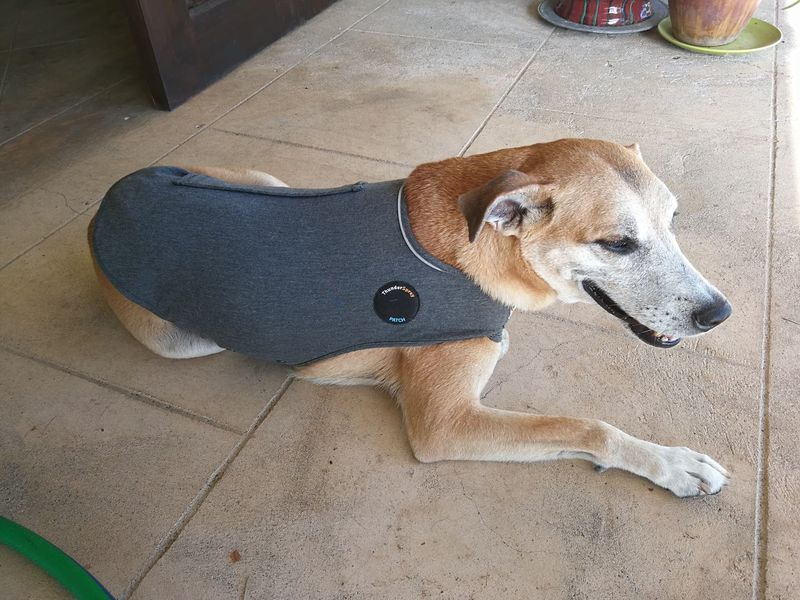
These specialized garments work like a constant, gentle hug for your dog. The slight, steady pressure has a calming effect similar to swaddling a baby. Most dogs experience immediate relief when wearing properly fitted anxiety wraps during storms.
Veterinarians often recommend introducing the Thundershirt before the stormy season begins. Let your dog wear it during positive experiences so they don’t only associate it with frightening situations. The wrap should be snug but not tight – you should be able to slip two fingers between the fabric and your dog’s body.
Research shows these pressure wraps can reduce heart rate and stress behaviors in approximately 80% of anxious dogs. They’re especially effective when used alongside other calming techniques.
3. Use White Noise Machines
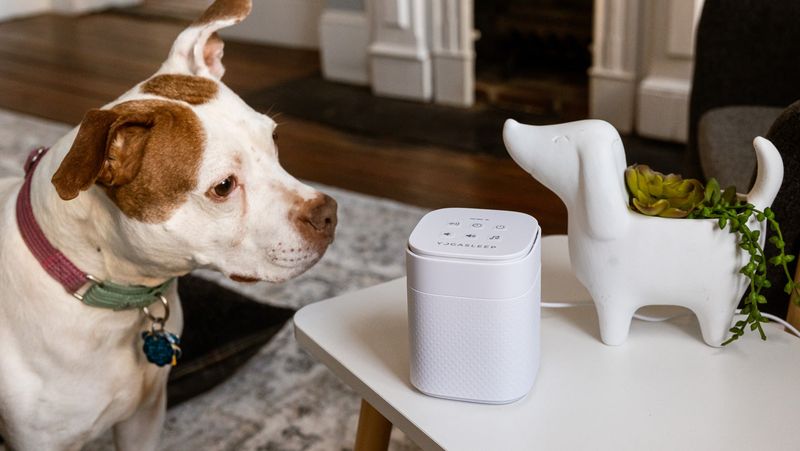
Blocking out the unpredictable crashes of thunder can significantly reduce your dog’s anxiety. A white noise machine, fan, or even the washing machine creates consistent background sounds that mask frightening storm noises. Some dogs respond better to specific frequencies – try different sound machines to see what works best.
Place the noise machine near your dog’s safe space, but not so close that it becomes another source of stress. Many pet owners find success with specially designed dog music or soundtracks created specifically for canine anxiety relief.
Start the white noise before the storm hits whenever possible. This proactive approach helps prevent your dog from becoming triggered by the first thunderclaps, making the entire event much easier to manage.
4. Desensitization Training
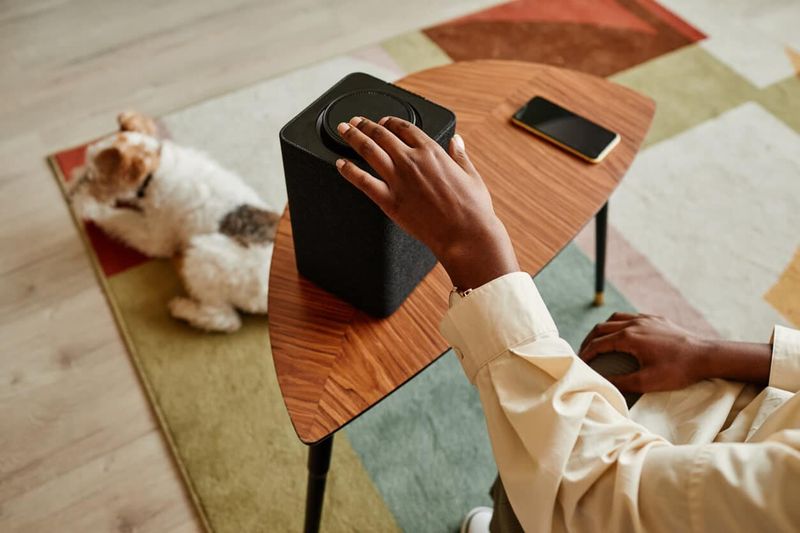
This technique gradually exposes your dog to storm sounds at low volumes, slowly increasing intensity as they become comfortable. Start with recorded thunder at barely audible levels while playing with your pup or giving treats. The goal is to create positive associations with storm sounds.
Consistency is crucial – short, daily sessions of 5-10 minutes work better than occasional longer ones. Many veterinarians recommend professional guidance for this training approach, especially for severely anxious dogs. The process requires patience and might take weeks or months before seeing significant results.
Track your dog’s body language carefully during sessions. Signs like yawning, lip licking, or looking away indicate stress, signaling you should decrease the volume. When done correctly, desensitization can create lasting improvements in storm anxiety.
5. Provide Comforting Pheromones
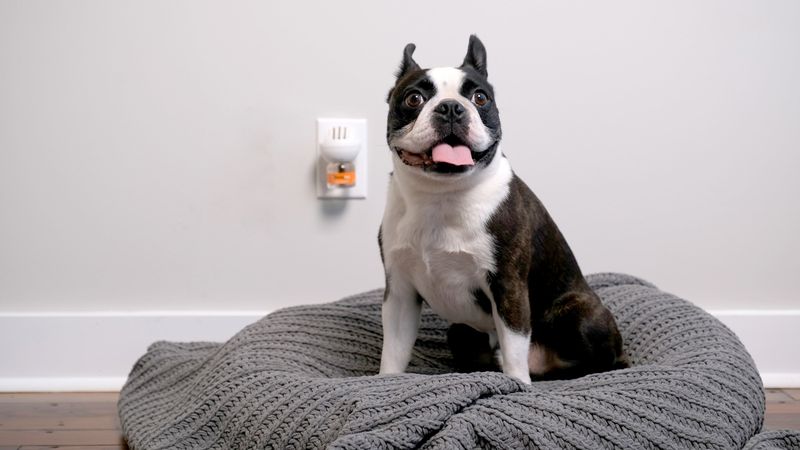
Dog-appeasing pheromones mimic the natural calming scents mother dogs release to soothe their puppies. Available as plug-in diffusers, sprays, or collars, these products create an invisible bubble of calming chemicals that help reduce anxiety during storms.
Many veterinarians recommend starting pheromone therapy before storm season begins. The diffusers work best in smaller, enclosed spaces where the concentration remains high. For maximum effectiveness, place them in your dog’s safe area and replace refills according to manufacturer’s guidelines.
While not every dog responds to pheromones, studies show that approximately 70% experience some reduction in anxiety symptoms. They’re particularly effective for mild to moderate storm anxiety and work well alongside other calming strategies without causing drowsiness or side effects.
6. Calming Music Therapy
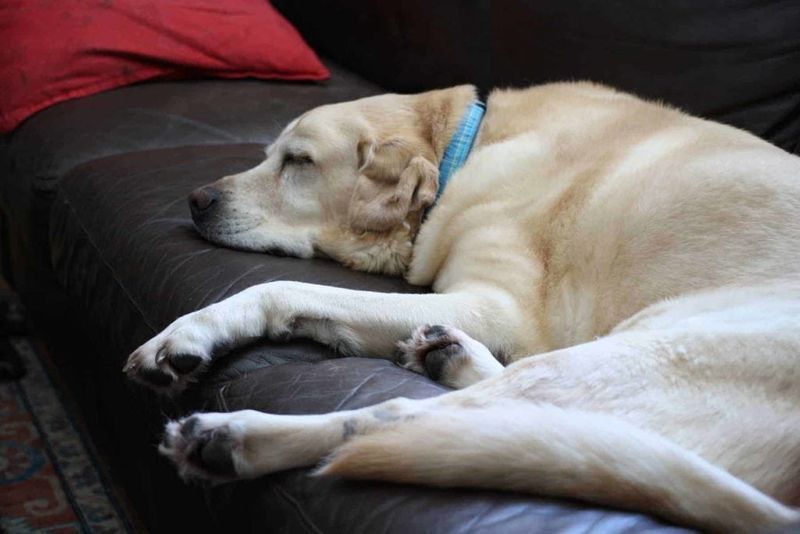
Specially composed canine music can work wonders during thunderstorms. Studies show classical pieces with slow tempos and simple melodies significantly reduce stress behaviors in anxious dogs. The consistent, predictable sound patterns help mask unpredictable thunder crashes.
Many streaming services now offer playlists designed specifically for dog anxiety. The most effective compositions feature sustained tones, minimal instrumentation changes, and the absence of dramatic crescendos that might startle already-nervous pups. Start playing the music before the storm begins for maximum effectiveness.
Regular exposure to these calming soundtracks, even during non-storm times, can create powerful positive associations. Some veterinarians recommend creating a specific “storm routine” that always includes the same music, helping your dog recognize that it’s time to relax.
7. Maintain Your Normal Routine
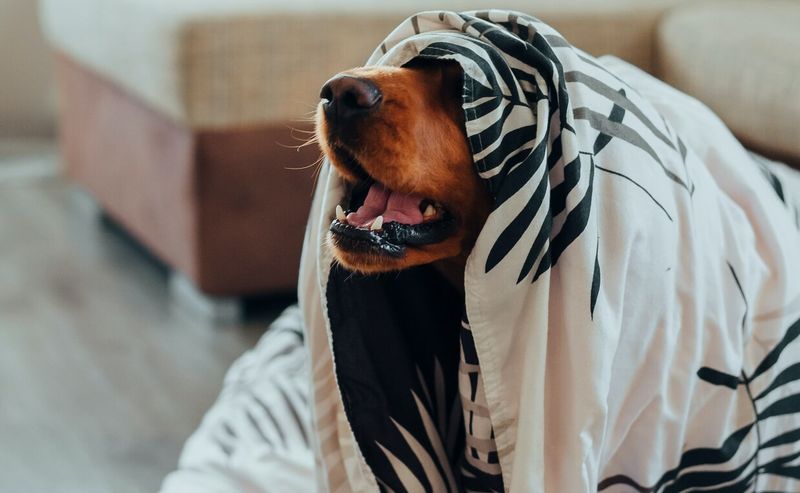
Dogs find tremendous comfort in predictability. Keeping mealtimes, walks, and play sessions as close to normal as possible during storms helps provide stability when everything else feels chaotic. Your calm, matter-of-fact behavior signals to your dog that there’s no real danger.
Avoid the temptation to change your routine when storms approach dramatically. While you might want to coddle your anxious pup, veterinary behaviorists warn this can actually reinforce fear responses. Instead, proceed with regular activities while offering quiet reassurance.
If outdoor activities aren’t possible during the storm, substitute indoor alternatives that follow similar timing – perhaps a puzzle toy at the usual walk time or indoor fetch when you’d normally play outside. This consistency provides an anchor for your dog when their environment feels threatening.
8. Consider Anti-Anxiety Medications
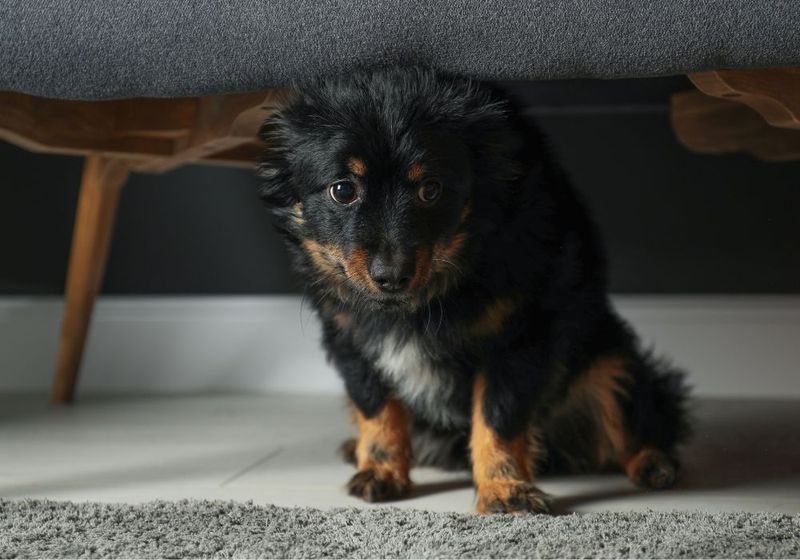
For dogs with severe storm phobia, prescription medications can provide much-needed relief. Unlike older sedatives that just made dogs drowsy but still anxious, modern anxiety medications address the underlying fear without excessive sedation. Your veterinarian might recommend situational medications taken before storms or daily options for storm-season management.
Common prescriptions include Sileo, specifically approved for noise aversion, or Trazodone, which reduces anxiety while allowing your dog to maintain normal function. These medications work best when started before panic sets in, so weather tracking apps can help with timing.
Never give human anxiety medications to your dog – they metabolize drugs differently, and common human medications can be dangerous. Always consult your veterinarian for appropriate dosing and monitoring, as individual responses vary significantly between dogs.
9. Distract With Interactive Toys
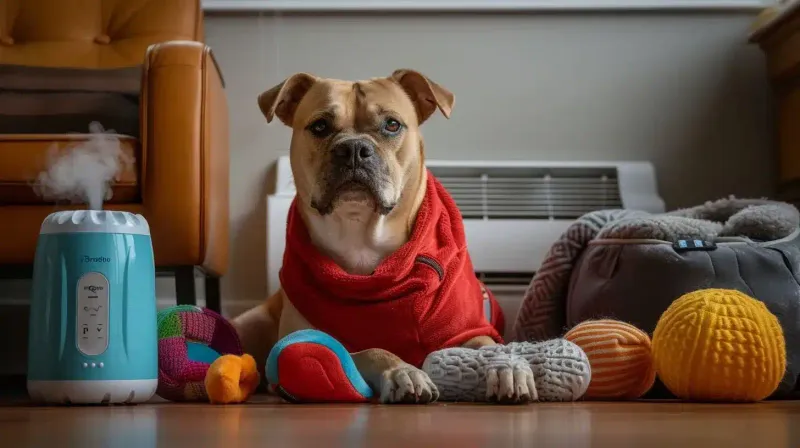
Engaging your dog’s brain during storms can redirect their focus away from frightening noises. Puzzle feeders, lick mats, and treat-dispensing toys create positive experiences that compete with anxiety. The most effective distractions involve food since they activate pleasure centers in the brain.
Frozen Kong toys filled with peanut butter provide extended distraction, and the repetitive licking action naturally releases calming endorphins. Some veterinarians recommend reserving special high-value treats exclusively for thunderstorms to create stronger positive associations.
For best results, introduce the distraction before your dog shows anxiety signs. Once full-blown panic starts, most dogs won’t engage with toys. Keep several different options available since storm-anxious dogs often lose interest in a single toy type quickly.
10. Provide Physical Comfort
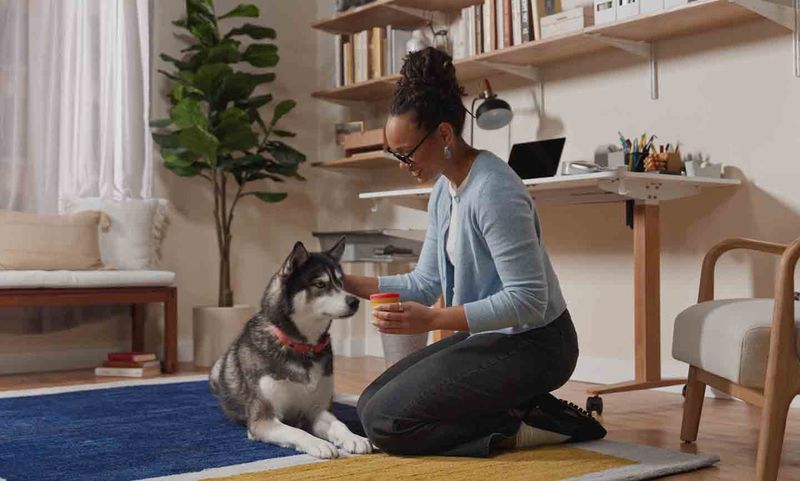
Simply being present with your anxious dog offers tremendous comfort during storms. Gentle, long strokes from head to tail can physically slow their heart rate and breathing. Many veterinarians recommend firm but gentle pressure rather than light petting, which might increase stimulation.
Some dogs find relief through specific massage techniques targeting stress points around the ears, shoulders, and base of the tail. The key is remaining calm yourself – dogs easily pick up on human anxiety, which can amplify their own fears.
While comfort is important, avoid excessive coddling or using high-pitched “baby talk,” which can unintentionally reinforce anxious behaviors. Instead, use a normal, calm voice and relaxed body language to communicate that everything is fine, even as thunder booms outside.
11. Create Visual Barriers

Lightning flashes can trigger anxiety even before thunder sounds. Closing blinds, curtains, and doors helps block these visual stimuli that signal an approaching storm. For particularly sensitive dogs, creating a completely dark safe space can significantly reduce anxiety triggers.
Some pet owners find success with specially designed “calming caps” that reduce visual stimulation without completely blocking vision. These lightweight fabric covers fit over your dog’s eyes and filter out sharp light changes while still allowing them to navigate safely around the home.
Consider your home’s lighting during storms as well. Bright overhead lights can make lightning flashes more dramatic, while soft lamps provide consistent illumination that minimizes the contrast. Keeping indoor lighting steady helps prevent the startling effect of sudden brightness changes.
12. Try Natural Calming Supplements
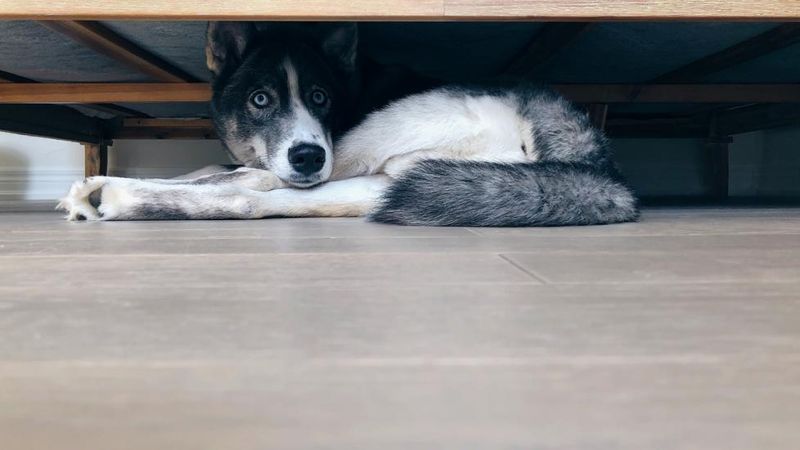
Several over-the-counter supplements can help take the edge off storm anxiety without the side effects of prescription medications. L-theanine, an amino acid found in green tea, promotes relaxation without sedation. Melatonin, the natural sleep hormone, provides mild calming effects that help many anxious dogs.
Veterinarians often recommend supplements containing tryptophan, which converts to serotonin in the brain, or products combining multiple calming ingredients like chamomile, valerian root, and CBD. These work best when given 30-60 minutes before storms begin.
Always consult your veterinarian before starting any supplement regimen, as dosages vary by weight and some may interact with medications. Quality matters tremendously – look for products specifically formulated for dogs from reputable manufacturers with testing verification.
13. Utilize Pressure Points
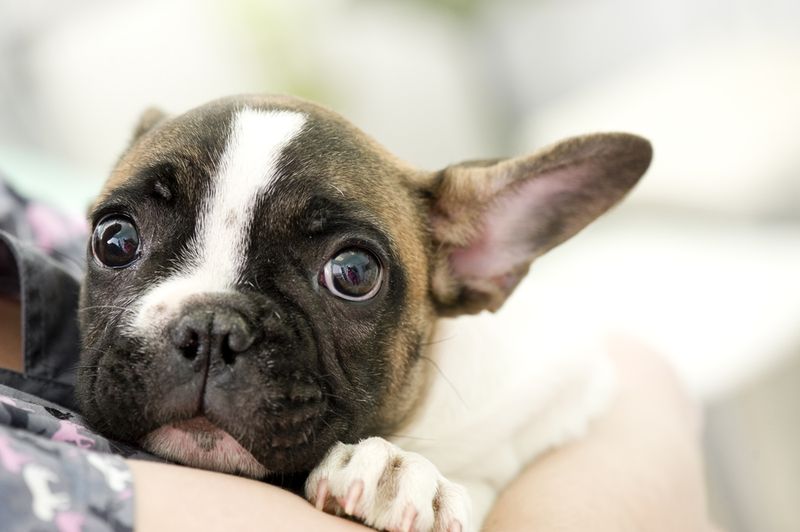
Specific acupressure techniques can activate your dog’s natural calming response during storms. The most effective points include the base of the ears, the center of the chest, and the area between the eyes. Gentle circular massage at these locations for 30-60 seconds often produces visible relaxation.
TTouch therapy, developed specifically for animals, involves making small circular movements with your fingertips over various body parts. Many veterinarians recommend this technique for storm anxiety because it’s easy to learn and can be applied anywhere, even if you’re away from home during bad weather.
For best results, practice these techniques during calm times so your dog associates the touch with relaxation before you need it in stressful situations. The pressure should be firm but gentle – never press hard enough to cause discomfort.
14. Invest In Sound-Dampening Solutions
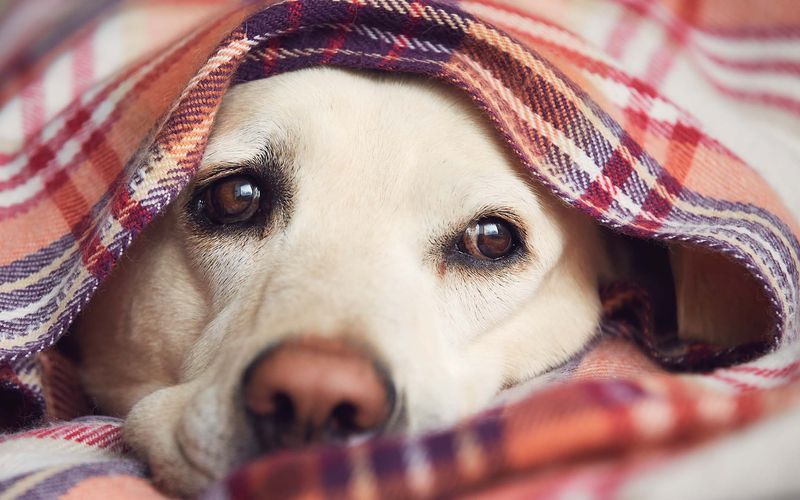
Strategic home modifications can significantly reduce the impact of thunderstorm noise on sensitive dogs. Acoustic panels, white noise machines, and sound-insulating curtains all help muffle the sharp crashes that trigger panic. Some pet owners create dedicated “quiet rooms” with multiple sound-dampening features.
For severe cases, consider noise-canceling headphones designed specifically for dogs. While they take some training for your pup to accept, these devices can reduce storm sounds by 20-30 decibels. Most feature soft, adjustable headbands and lightweight ear cups that don’t put pressure on sensitive ears.
Even simple solutions like moving dog beds away from exterior walls and windows can make a significant difference. Sound travels more intensely through glass and thin walls, so central locations in your home naturally provide better sound buffering during frightening weather events.
15. Consider Alternative Therapies
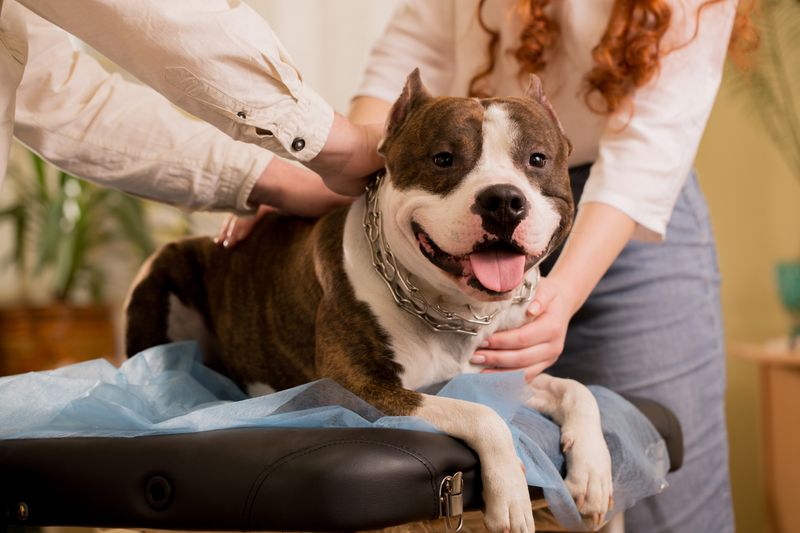
Many veterinarians now recommend complementary approaches for storm anxiety alongside traditional treatments. Therapeutic touch, like Reiki or TTouch, uses specific hand movements to calm nervous systems. These gentle techniques can be learned through online tutorials or from certified animal practitioners.
Aromatherapy using dog-safe essential oils like lavender or chamomile can create a calming environment. Always use diffusers placed high where dogs can’t knock them over, and ensure proper dilution – dogs’ sensitive noses need much lower concentrations than humans.
Flower essences, particularly Rescue Remedy Pet, are liquid extracts that support emotional balance during stressful events. Unlike essential oils, these can be added directly to water bowls in small amounts. While scientific evidence varies, many pet owners and holistic veterinarians report significant improvements with consistent use.

